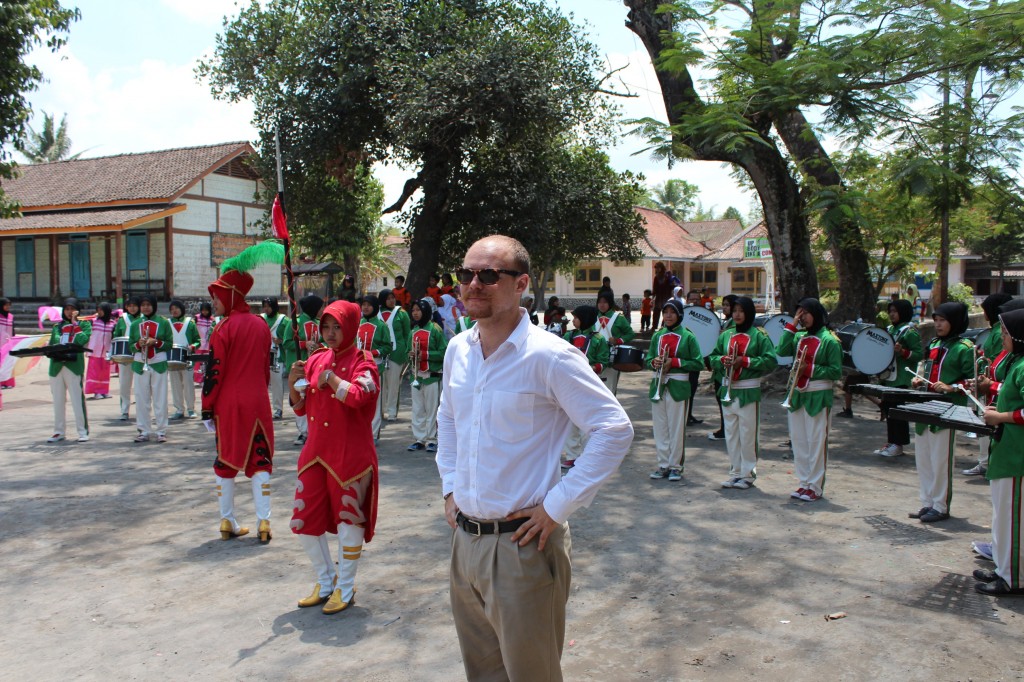
My introduction to the study of linguistics came from my friend and fellow Cal lacrosse player, Kevin, who also happens to be the most intelligent man I know. Four years ago we were sitting in front of the Golden Bear Café eating sandwiches from Cheese & Stuff, “turkey, no cheese, everything, no pickles, no mustard, thanks Sam.”
He was going on about a genius professor we had each heard speak by the name of George Lakoff. Kevin was explaining to me some linguistic concepts, particularly about the production of sound and how some sounds are missing from some languages. The result is that people raised with exclusive practice in a single language often find it difficult to hear certain sounds in a new language, and find it even more trying to produce them.
At the time I found the idea to be only a strange commodity to be used at some event or party to show off my Berkeley education. It wasn’t until at that very event I was entranced by a beautiful French woman who was able to pronounce words with sounds that made me drool. Literally, I drooled trying to make my mouth into the shape I thought would emulate that sound.
Teaching a foreign language abroad has made me even more keenly aware of the sounds I am used to creating. In the Indonesian language words ending in the letter “k” are often pronounced with a glottal stop rather than a hard “k” sound. A glottal stop is a phoneme not used in the English language. It can be most closely simulated saying the phrase “uh oh” marked at the stop in between “uh” and “oh”.
Not only do I have a difficult time creating certain phonemes, but I also have a difficult time hearing them. Often subtle differences sound the same to me. I have a difficult time understanding when people say something is easy (translation: mura) and when someone or something is cheap (translation: murah). In the English language we don’t pronounce the “h” at the end of a word if it follows a vowel. These two words sound exactly the same to me because I am not trained to hear the sound. Say them aloud to yourself and you will see the difficulty.
The placement of the “ng” sound in the middle of a word is difficult for English speakers as well. In English this sound usually comes at the end of a word like in strong, belong, and bang that gong. When it abnormally comes in the middle of a word we often pronounce the sound with a hard ‘g’ sound like in language. In the Indonesian language words like mengajar (translation: to teach), and menyanangkan (translation: enjoyable) have this sound in the middle of the word.
The English language has sounds not in the Indonesian language, which has made it somewhat difficult to teach students certain concepts. For instance, there is no “th” sound in the Indonesian language. Not only have I had to attempt to explain how to create this sound by placing the tongue in-between the front teeth to say the word “three” for example, but I have had to teach a differentiation between the sound of “th” in ‘thistle’ compared to ‘that’.
There is also no “sh” sound in the Indonesian language. To teach how to make this sound I related it to a sound they do know. There is a letter (shin) in the Arabic language that says the “sh” sound. By invoking their knowledge of this letter I was able to help my students read and pronounce words like “share” and “sure”.
I won’t even begin to describe the process of teaching homonyms and the reason we have so many synonyms, the conjugation of passive verbs, idioms, clichés, and spellings with multiple pronunciations. For the most part I will spare you this lesson because it is boring. A small part is that as a native speaker, a lot of the rules of the English language I simply don’t know and was never taught.
____________________________
jared
